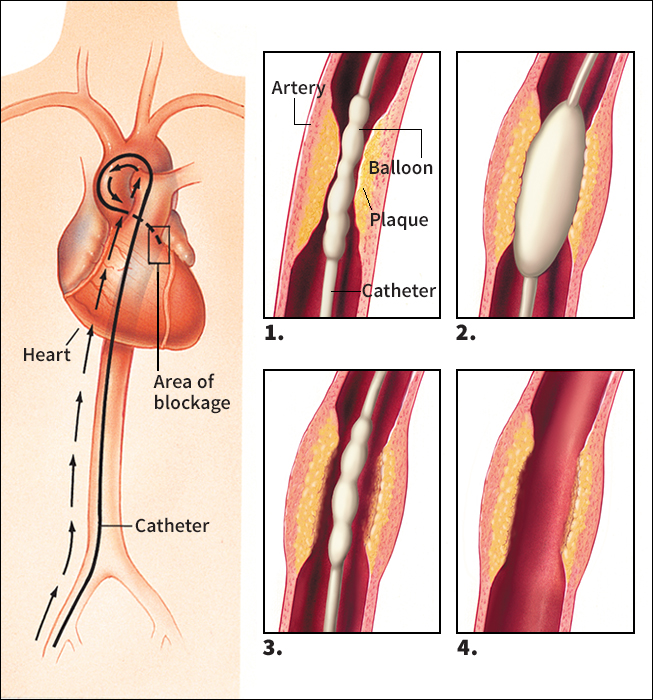Angioplasty, << `an` jee oh PLAS tee, >> is a technique used to open arteries that have become blocked by deposits of cholesterol, calcium, and other substances. Such deposits are called plaques. Angioplasty is especially important for patients whose coronary arteries have become critically narrowed and who have angina (chest pain that occurs during exertion) or a high risk of heart attack. Angioplasty provides an alternative to surgery.
In coronary angioplasty, a catheter (long tube) with a balloon attached to it is inserted into the blocked artery. After the catheter enters the narrowed part of the vessel, the balloon is inflated. The balloon then pushes the plaque against the artery wall and expands the artery. In most cases, slight injury to the wall of the artery accompanies the widening of the vessel’s inside diameter. This damage may benefit the patient, however, because further widening can occur as the artery wall heals.

Most angioplasties are successful. In about 30 percent of patients, however, the cleared vessel soon renarrows, requiring another angioplasty or surgery. In a small number of cases, the procedure severely tears the artery. In those cases, the patient must undergo immediate surgery and repair. Doctors have prevented tears and abrupt closures of arteries by inserting an expandable metal mesh called a stent into the vessel. The stent prevents collapse of the artery wall without blocking blood flow. In some cases, a stent can also reduce the chance that the artery will renarrow.
